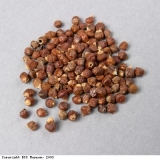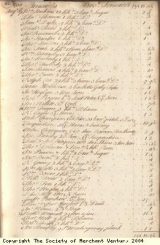Trade goods from the East: Spices
Traders from all over the East Indies met at the ‘great market’ in the large city of Bantam, on the island of Java (now part of Indonesia). The wide variety of traders who brought their goods here included Arab, Turkish, Indian, Indonesian, Chinese and European traders. The market sold a wide range of goods. There were melons and coconuts, sugar and honey, beans, bamboo, swords and knives, men’s clothes, women’s clothes, spices and drugs, meat, fish, fruit, vegetables, pepper, onions and garlic, rice, jewellery and birds.
Traders from the British trading company, the East India Company, traded in the region. They would come to markets such as this one offering British goods in exchange for these ones. They offered such things as woollen cloth and ‘fancy’ goods like sword blades, mirrors, coral and ivory, and iron, lead and tin bars. There was limited demand for wool and fancy goods in the East Indies , so much of their purchasing was done with silver instead.
The East India Company wanted spices from the East Indies. Spices were in demand in Europe, but the supply was limited. The price was therefore high. Spices such as pepper, cloves, nutmeg, cinnamon and ginger, were used literally to spice up the taste of food, and for the manufacture of medicines. Wharfage books were used to show what ships brought in and out of ports. From these, we can see that the East India Company imported into London 7,000,000 lbs (almost 3,200,000 kgs) of pepper in 1677.
The development of trade with the East Indies and the increase in the supply of black pepper from there helped to kill the trade in another pepper from West Africa. West African pepper was called Melegueta pepper. It was sometimes known as Guinea grains because came from the area in West Africa known to the Europeans as Guinea (modern Liberia). Slave ships from Bristol brought it back from Africa, the ship the Rachell, for example, in 1711 brought back 10,262 lbs (4575 kgs). The new supply of the less expensive pepper from the East Indies meant that West African pepper was less popular.




